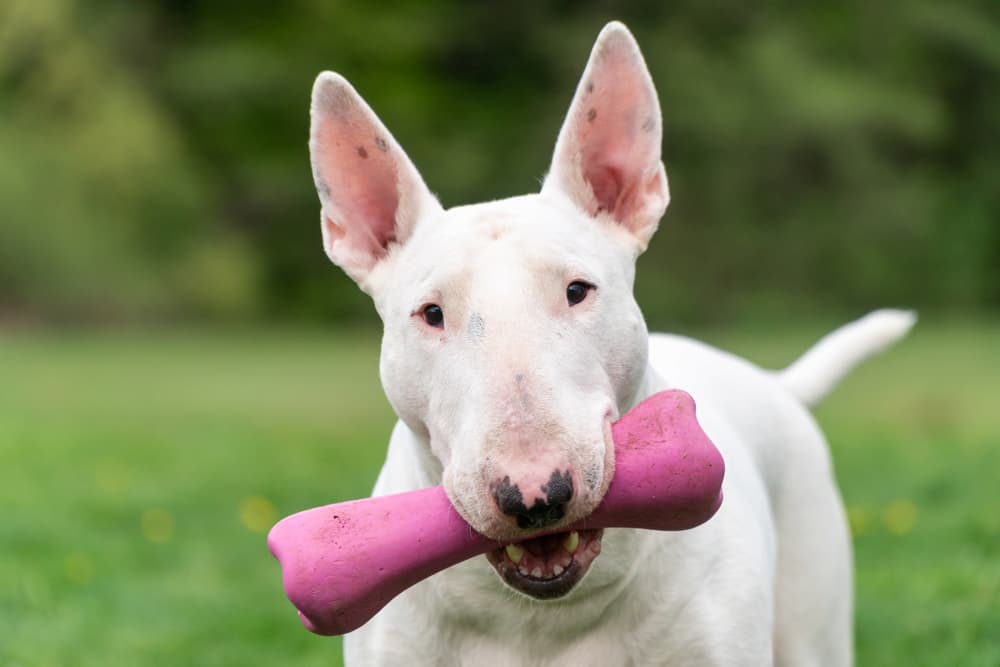In addition to its distinctive oval head, the bull terrier boasts remarkably small eyes that sit closer to the ears than to the nose, a robust and muscular physique, and alert, pointed ears that stand tall when it’s on the lookout. This breed sports a thick neck, a deep chest, and powerful, well-defined legs. Its coat is typically short, glossy, and stiff, with white being the most common color, although some bull terriers may have more variegated coats in shades of brown and red.
One remarkable trait worth noting is the bull terrier’s formidable jaw strength. In an attack situation, its jaws can lock onto a target, making it nearly impossible to break free.
The bull terrier is a playful and affectionate dog that has a deep love for people and a remarkable attentiveness to their needs. This breed possesses an uncanny ability to understand the thoughts, emotions, and intentions of its owners. While it’s true that at times, the bull terrier can display a streak of stubbornness, it remains unfailingly loyal and willing to perform any task you ask of it.
This athletic and energetic dog thrives on physical activity and will always be eager for playtime and exercise. Without proper exercise, it may be prone to weight gain and may develop destructive behaviors like excessive barking, chewing, or causing damage to household items, engaging in tail-chasing, and more. In situations where you must leave your bull terrier at home for extended periods, it’s essential to ensure they have expanded their energy through physical activity beforehand.
If you already have a dog, cat, or any other pet at home, it’s important to consider that a bull terrier may not necessarily be the right fit for your household. A bull terrier that hasn’t undergone proper socialization at a young age or hasn’t grown up alongside another animal from day one may exhibit aggressive behavior towards them. This situation would necessitate constant supervision and intervention on your part. Just do yourself a favor and don’t bully or tease the bull terrier, not even while playing. This means avoiding power struggles, provocation, or confrontational play.




















